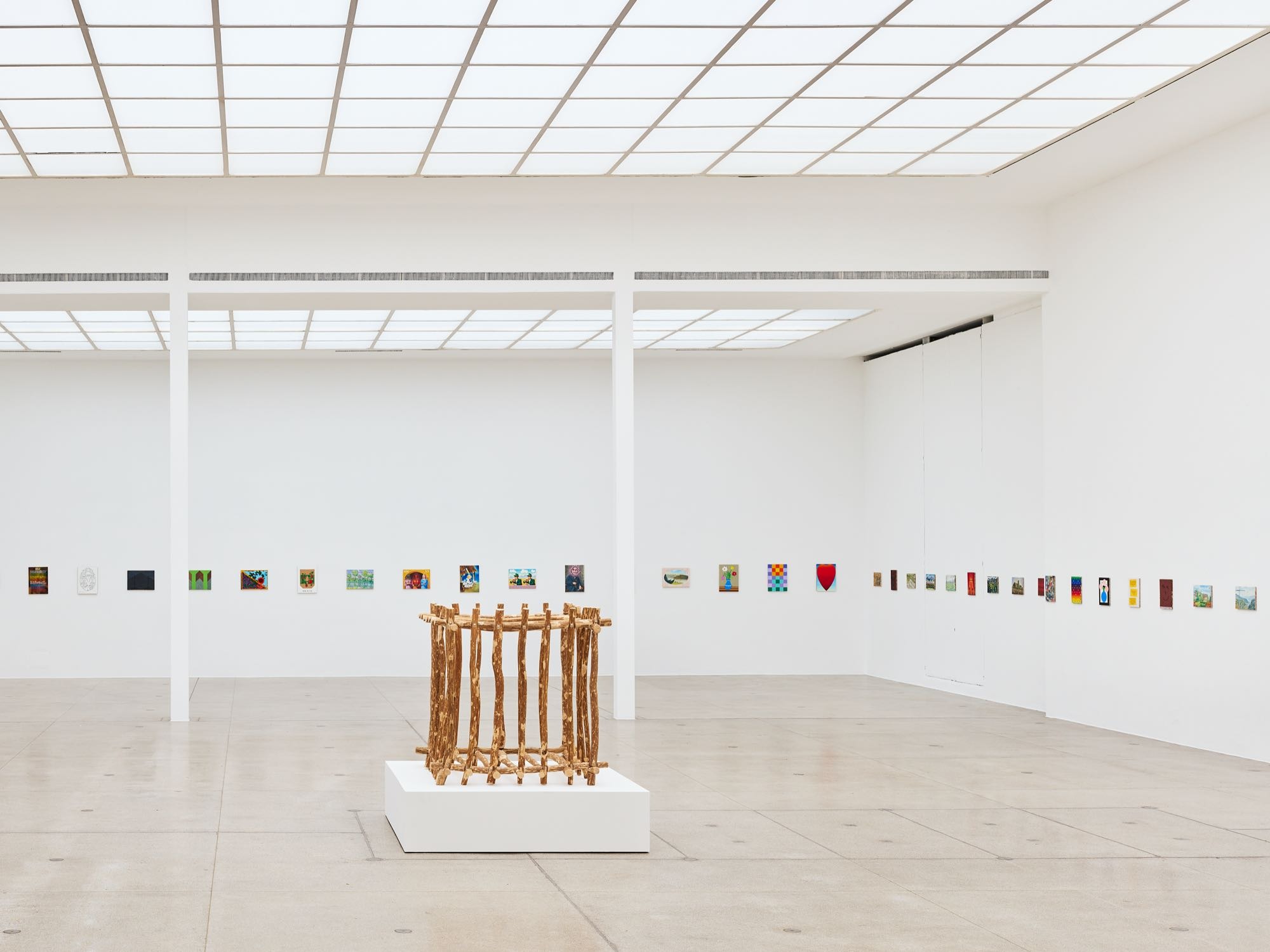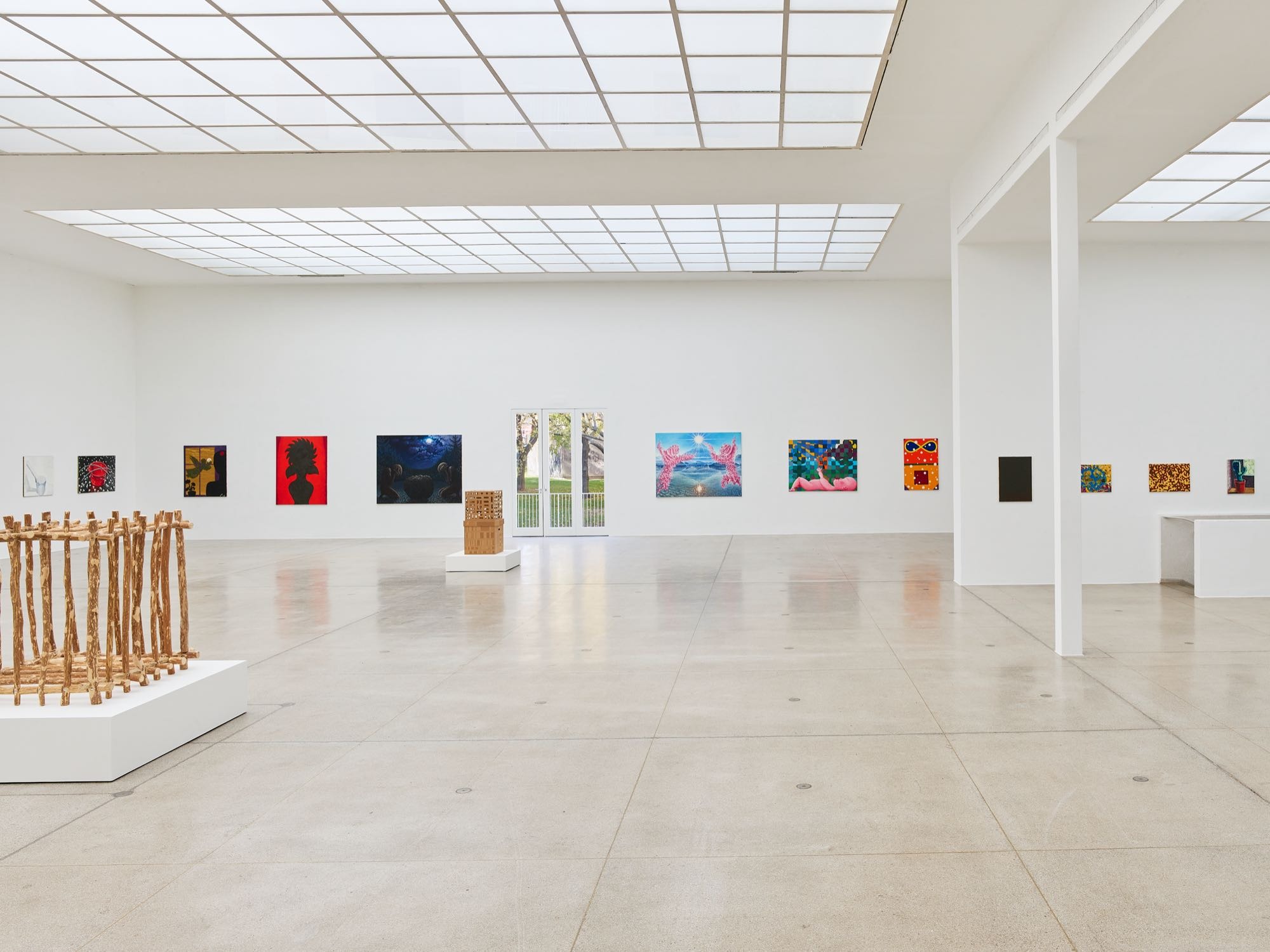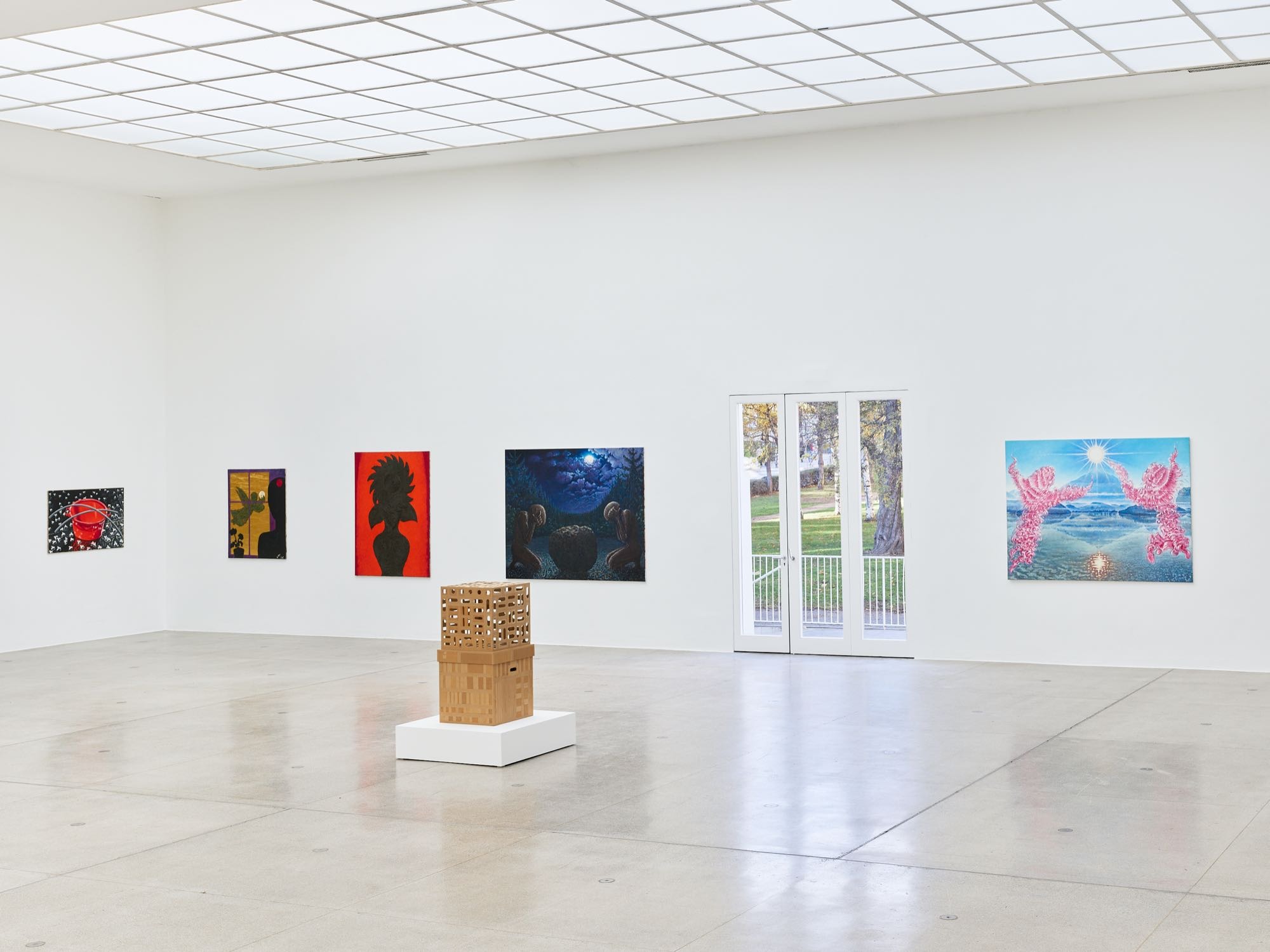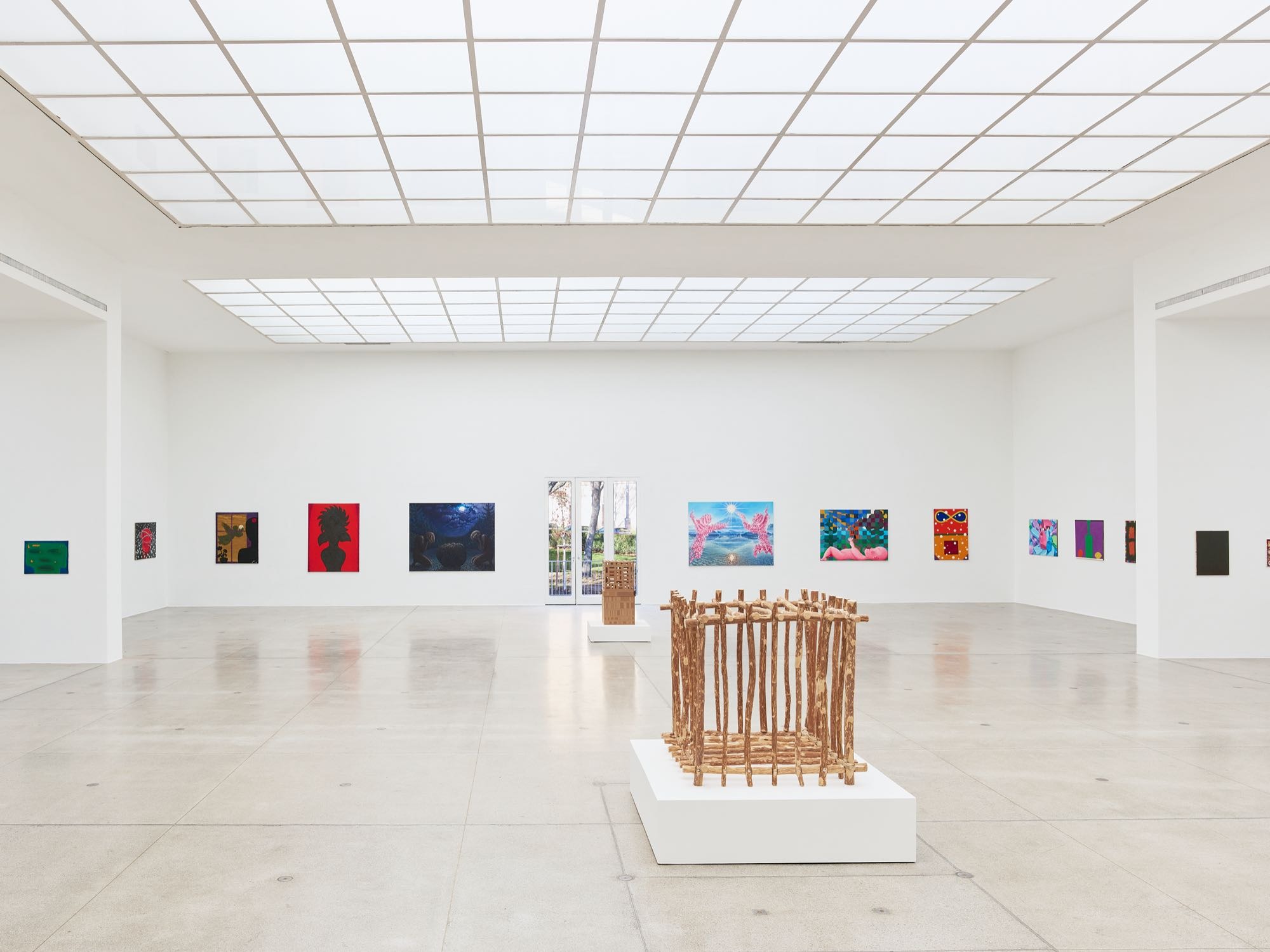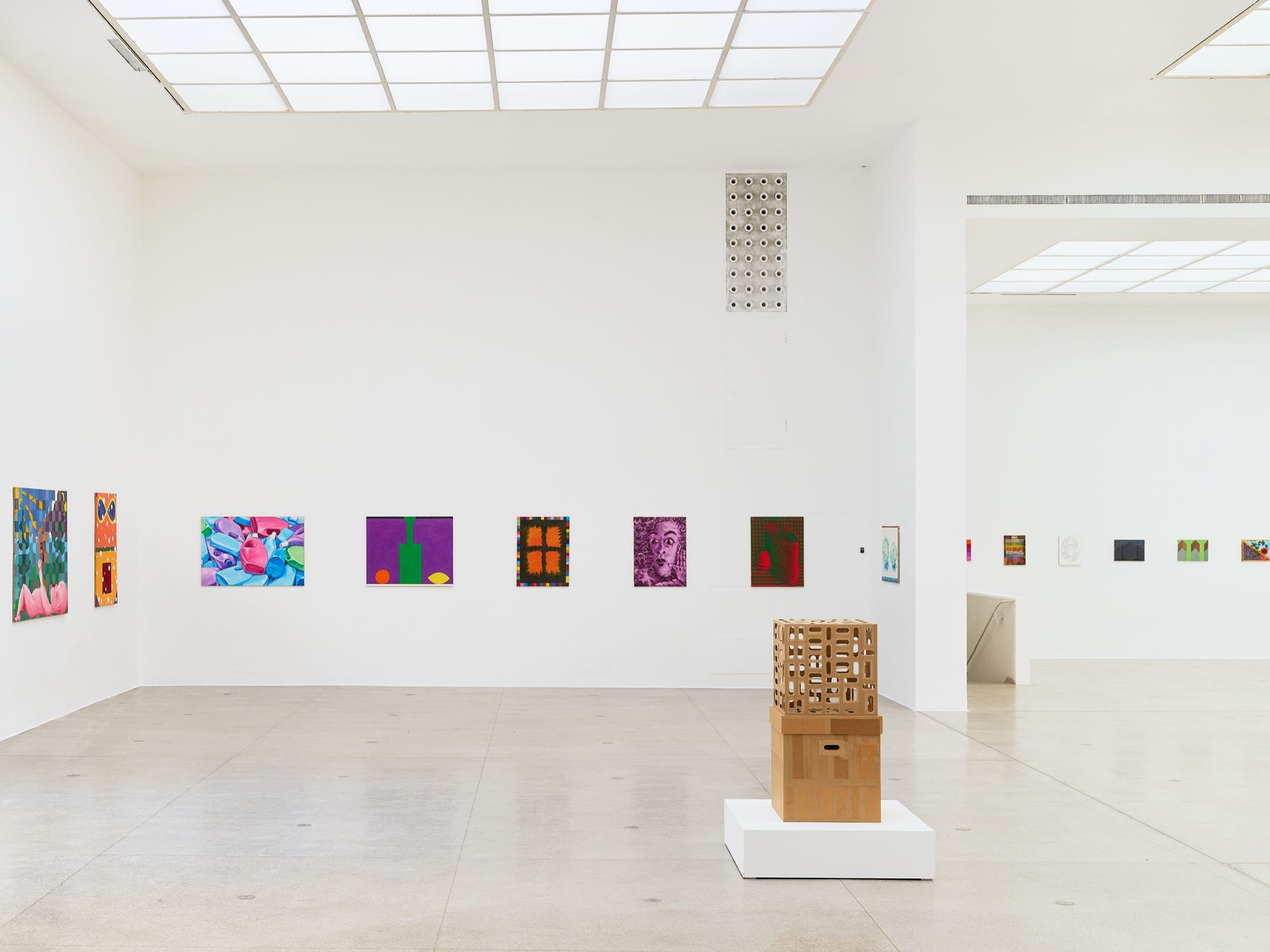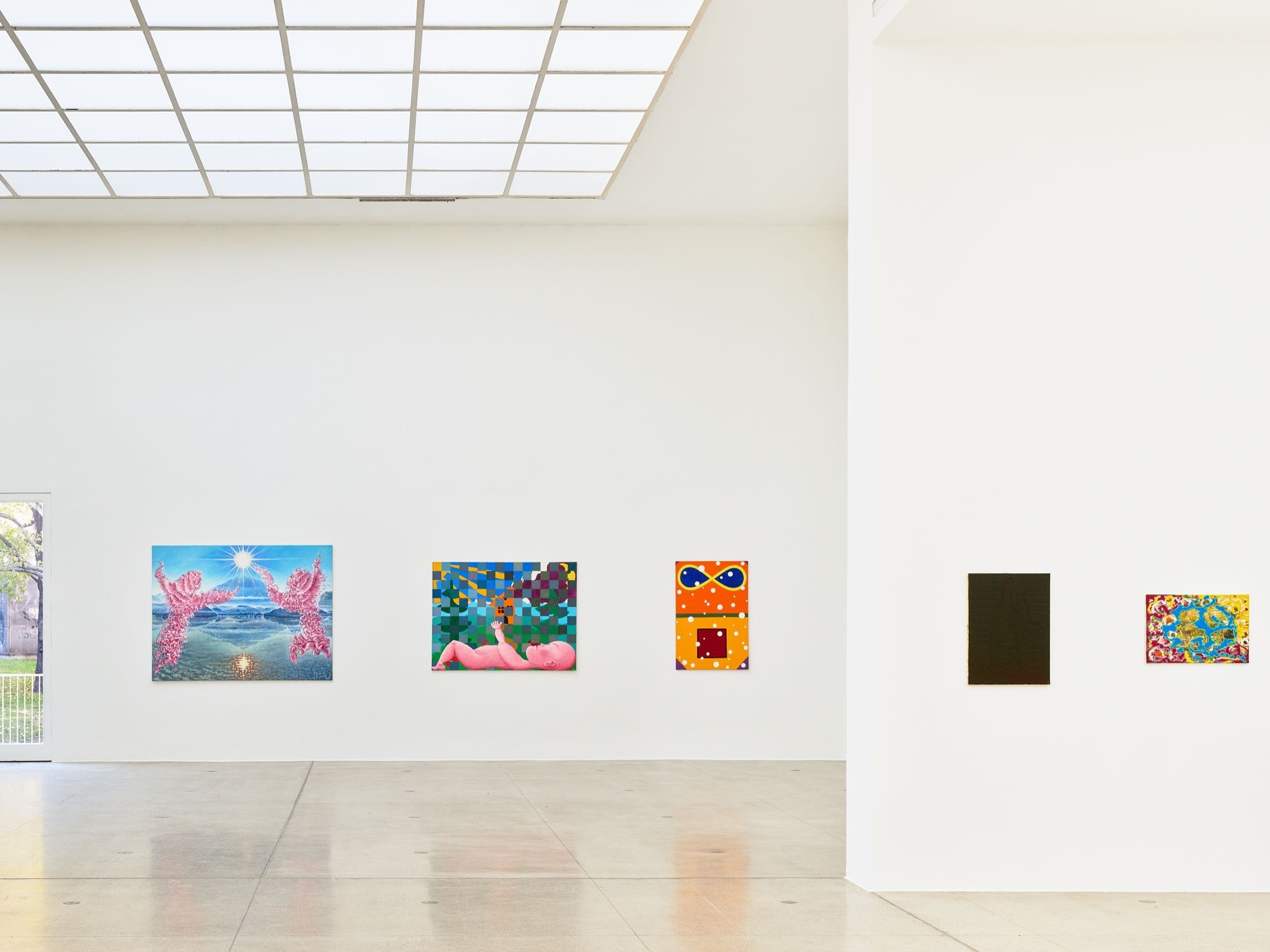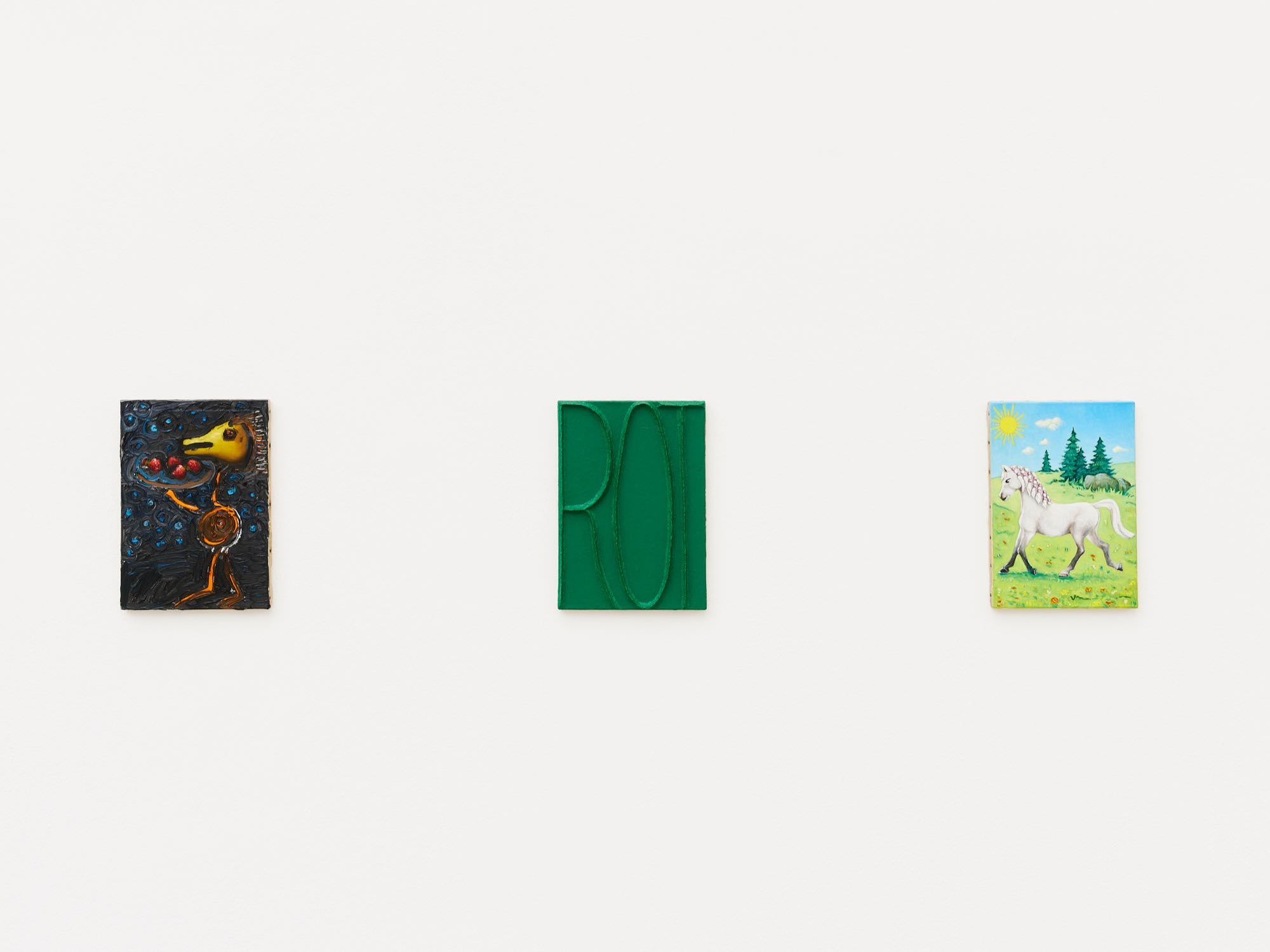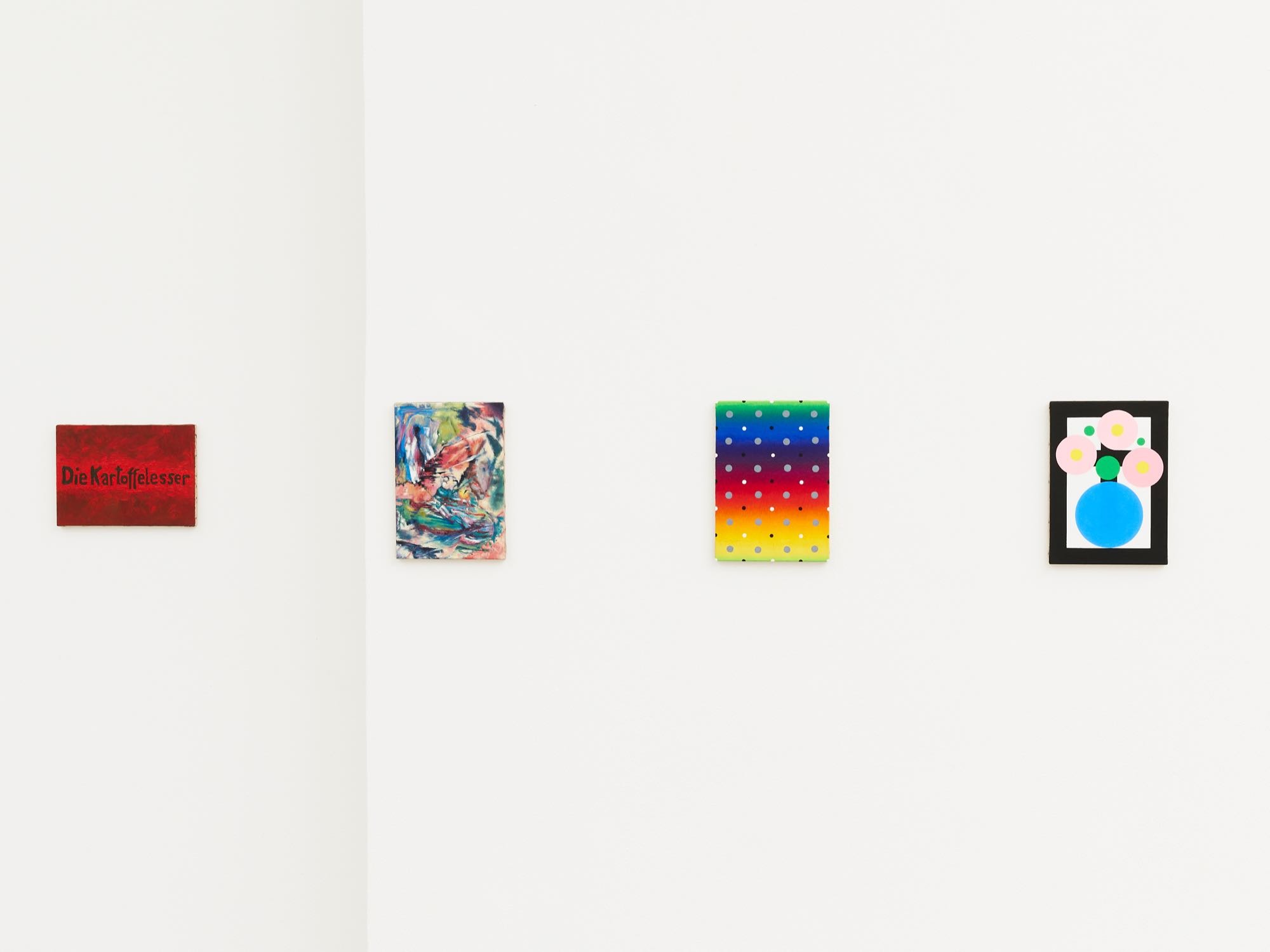Jean-Frédéric Schnyder
18 Nov 2022 - 05 Feb 2023
In his exhibition at the Secession, the Swiss artist Jean-Frédéric Schnyder shows a cross-section of his painting from almost forty years (1983–2021). In his typical manner, the 102 paintings of various formats (all: oil on canvas) are hung evenly spaced and, increasing in size from front to back and then decreasing again, form a horizontal line. The ever-changing live image of the outdoor space, which the glass door on the front wall reveals, is part of the concept.
Since the late 1960s, Schnyder has created a vast oeuvre of paintings, photographs, sculptures, objects, and installations. In his art practice he remains radically open, one result of which is a fully diverse body of work. However, looking at Schnyder’s painterly work since the beginning of the 1970s, one discovers a surprising consistency and breaks in equal measure.
In each new series of works, which at the same time represents an experimental set-up, the artist concentrates meticulously on the chosen theme. His interest in the painterly process itself motivated him, for example, to explore vedute painting and to translate it into multi-part series of plein air paintings: the series of Bernese vedutes (Berner Verduten) consisting of 128 small-format paintings (early 1980s) or the series on Lake Thun (Am Thunersee) realized in the mid-1990s, which comprises 38 small-format paintings.
Schnyder orients his choice of themes and motifs on existing and common practices, plays them consistently and skillfully through – still life, nude, landscape, the three most common motifs in art history, for example – while the works remain stylistically highly heterogeneous. Instead of perpetuating the romanticized archetype of Swiss Alpine images, it rather represents images of humanly cultivated, self-made landscape – for example, when highways and roads are foregrounded. The artist works in his studio with figurative-abstract motifs and styles. For a series of flower paintings – another classic motif – he applies a pixel system that recalls an early digital aesthetic as well as color field painting of the beginning of the 20th century.
The artist has often created sculptural objects from everyday objects and leftover materials. The work Empire State Building from 1971, for example, consists of Lego bricks, chewing gum and a light source hidden inside. (Banana) boxes previously used as moving cartons are also recycled, especially the parts with standardised punched-out handles. The artist carefully sticks these together with brown paper tape to form new objects – the object Durchbrochen (2015) presented in the exhibition for example. The second object in the exhibition, Käfig (2008) – a hollow space formed from branches of a hazelnut tree – quasi represents a counter-object of the same sculptural motif here.
Schnyder has exhibited internationally since the end of the 1960s, including the legendary exhibitions When Attitude Becomes Form at Kunsthalle Bern (1969), documenta 5 (1972) and documenta 7 (1982); in 1993 he represented Switzerland at the Venice Biennale. In 2022, two exhibitions were dedicated to the artist in Bern, at the Kunstmuseum and the city’s Kunsthalle.
Programmed by the board of the Secession
Curated by Jeanette Pacher
Since the late 1960s, Schnyder has created a vast oeuvre of paintings, photographs, sculptures, objects, and installations. In his art practice he remains radically open, one result of which is a fully diverse body of work. However, looking at Schnyder’s painterly work since the beginning of the 1970s, one discovers a surprising consistency and breaks in equal measure.
In each new series of works, which at the same time represents an experimental set-up, the artist concentrates meticulously on the chosen theme. His interest in the painterly process itself motivated him, for example, to explore vedute painting and to translate it into multi-part series of plein air paintings: the series of Bernese vedutes (Berner Verduten) consisting of 128 small-format paintings (early 1980s) or the series on Lake Thun (Am Thunersee) realized in the mid-1990s, which comprises 38 small-format paintings.
Schnyder orients his choice of themes and motifs on existing and common practices, plays them consistently and skillfully through – still life, nude, landscape, the three most common motifs in art history, for example – while the works remain stylistically highly heterogeneous. Instead of perpetuating the romanticized archetype of Swiss Alpine images, it rather represents images of humanly cultivated, self-made landscape – for example, when highways and roads are foregrounded. The artist works in his studio with figurative-abstract motifs and styles. For a series of flower paintings – another classic motif – he applies a pixel system that recalls an early digital aesthetic as well as color field painting of the beginning of the 20th century.
The artist has often created sculptural objects from everyday objects and leftover materials. The work Empire State Building from 1971, for example, consists of Lego bricks, chewing gum and a light source hidden inside. (Banana) boxes previously used as moving cartons are also recycled, especially the parts with standardised punched-out handles. The artist carefully sticks these together with brown paper tape to form new objects – the object Durchbrochen (2015) presented in the exhibition for example. The second object in the exhibition, Käfig (2008) – a hollow space formed from branches of a hazelnut tree – quasi represents a counter-object of the same sculptural motif here.
Schnyder has exhibited internationally since the end of the 1960s, including the legendary exhibitions When Attitude Becomes Form at Kunsthalle Bern (1969), documenta 5 (1972) and documenta 7 (1982); in 1993 he represented Switzerland at the Venice Biennale. In 2022, two exhibitions were dedicated to the artist in Bern, at the Kunstmuseum and the city’s Kunsthalle.
Programmed by the board of the Secession
Curated by Jeanette Pacher

